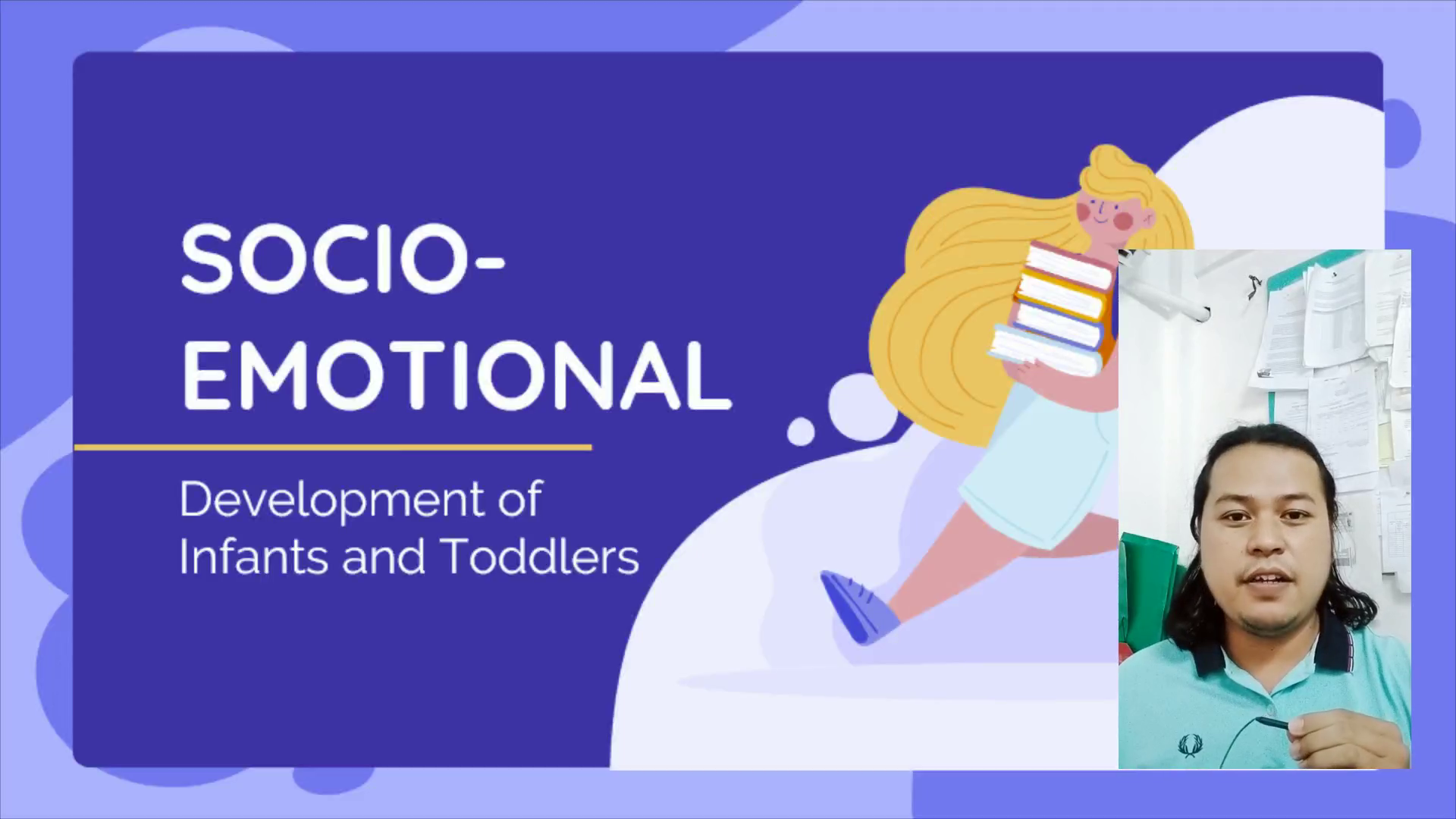Scene 1 (0s)
Development of Infants and Toddlers. SOCIO-EMOTIONAL.
Scene 2 (44s)
PRE-SERVICE TEACHERS. BEJAR, Frelile Joy Presenter.
Scene 3 (1m 0s)
DESCRIBE. the socio-emotional development of infants and toddlers.
Scene 4 (2m 2s)
“ Train up a child in the way he should go; and when he grow up, he will not depart from it .”.
Scene 5 (3m 2s)
SOCIO-EMOTIONAL DEVELOPMENT. Social-emotional development is a child’s ability to understand the feelings of others, control their own feelings and behaviors, and get along with peers..
Scene 6 (4m 28s)
FORMATIVE YEARS. It is the first three years of the development of a child. Parents and other caregivers play a signicant role in these years..
Scene 7 (5m 29s)
ELEMENTS OF SOCIO-EMOTIONAL DEVELOPMENT. TEMPERAMENT.
Scene 8 (6m 12s)
ATTACHMENT. A relationship bond between a child or young person and their primary caregiver. According to Dr. John Bowly, the father of attachment theory, the beginnings of attachment occur within the first 6 months of a baby’s life..
Scene 9 (9m 36s)
ATTACHMENT. The key to good start in the social development of a baby is a lot of responsive interaction with the baby. Consistent involvement is absolutely central to babies’ emotional well-being not feeding..
Scene 10 (13m 20s)
ATTACHMENT. Children with good attachment relationship make better adjustments in future life, nevertheless a child must be treated sensitively and responsibly. More caregiver can develop emotional relationship with multiple caregivers at once..
Scene 11 (17m 6s)
ATTACHMENT. The family contributes more to child’s social and cognitive well-being than does the child care arrangement. Parents and caregivers serve as models of children to regulate their emotions..
Scene 12 (22m 6s)
TEMPERAMENT. Is c hild’s behavioural style which determines how they react to situations, and expresses and regulates emotions According to K. Pasek & R. Golinkoff (2003), it is word that “captures the ways that people differ……”.
Scene 13 (23m 15s)
TEMPERAMENT. There are nine (9) different categories of temperament according to researchers Thomas, Chess, and Birch namely: Activity level, Mood, Threshold for distress, Rhythmicity, Intense of Response, Approach Withdrawal, Distractibility, Adaptibility , and Persistence.
Scene 14 (23m 47s)
NINE (9) CATEGORIES OF TEMPERAMENT. ACTIVITY LEVEL Some babies are placid or inactive. They must be watched carefully..
Scene 15 (24m 16s)
NINE (9) CATEGORIES OF TEMPERAMENT. 2. THE MOOD Some babies are smiley and cheerful. Others have a low-key mood.
Scene 16 (24m 29s)
NINE (9) CATEGORIES OF TEMPERAMENT. THRESHOLD FOR DISTRESS Some babies are sensitive. Others are comfortably waiting to sustain their needs.
Scene 17 (24m 47s)
NINE (9) CATEGORIES OF TEMPERAMENT. RHYTHMICITY OF CHILDREN Some babies get hungry or sleepy on irregular basis. They are unpredictable and hard to put on a “schedule’’..
Scene 18 (25m 43s)
NINE (9) CATEGORIES OF TEMPERAMENT. INTENSITY OF RESPONSE They shriek with delight and respond with high energy when reacting to happy o challenging situations..
Scene 19 (25m 53s)
NINE (9) CATEGORIES OF TEMPERAMENT. APPROACH-WITHDRAWAL Some infants are very cautious. Other infants approach new persons, activities, or new play possibilities with enjoyment..
Scene 20 (26m 26s)
NINE (9) CATEGORIES OF TEMPERAMENT. DISTRACTIBILITY Some children can concentrate on toys, others are easily distracted..
Scene 21 (26m 47s)
NINE (9) CATEGORIES OF TEMPERAMENT. ADAPTABILITY Some children can recover fairly Others adjust to new situations with difficulty..
Scene 22 (27m 23s)
NINE (9) CATEGORIES OF TEMPERAMENT. PERSISTENCE Some children have a long attention span. Others flit from one activity to another..
Scene 23 (28m 2s)
THREE (3) BASIC TYPES OF TEMPERAMENT. EASY CHILD.
Scene 24 (28m 57s)
DEVELOPMENT OF EMOTIONS. EARLY INFANCY (Birth-six months).
Scene 25 (29m 32s)
DEVELOPMENT OF EMOTIONS. LATER INFANCY (7-12 months).
Scene 26 (30m 11s)
DEVELOPMENT OF EMOTIONS. TODDLERHOOD YEARS (1-2 YEARS).
Scene 27 (31m 4s)
DEVELOPMENT OF EMOTIONS. EMOTIONAL UNDERSTANDING.
Scene 28 (31m 43s)
ERICKSON’S PSYCHOSOCIAL THEORY. PSYCHOSOCIAL CRISIS TRUST MISTRUST Parents expose the child to warmth, regularity, and dependable affection. The parents failed to provide a secure environment and meet the child’s basic need. Satisfy the basic needs. Others are abusive and neglectful. Others are dependable and reliable. World is undependable, unpredictable, and dangerous place..
Scene 29 (32m 52s)
ERICKSON’S PSYCHOSOCIAL THEORY. PSYCHOSOCIAL CRISIS AUTONOMY SHAME & DOUBT Parents ’ patience and encouragement. Highly r estrictive parents. Encourage self-sufficient behavior. Demand too much too soon. Ridicule early attempts at self-sufficiency..
Scene 30 (33m 53s)
ANALYSIS. Children Learn What They Live by Dorothy Law Nolte If children live with criticism, They learn to condemn. If children live with hostility, They learn to fight. If children live with ridicule, They learn to be shy. If children live with shame, They learn to feel guilty ..
